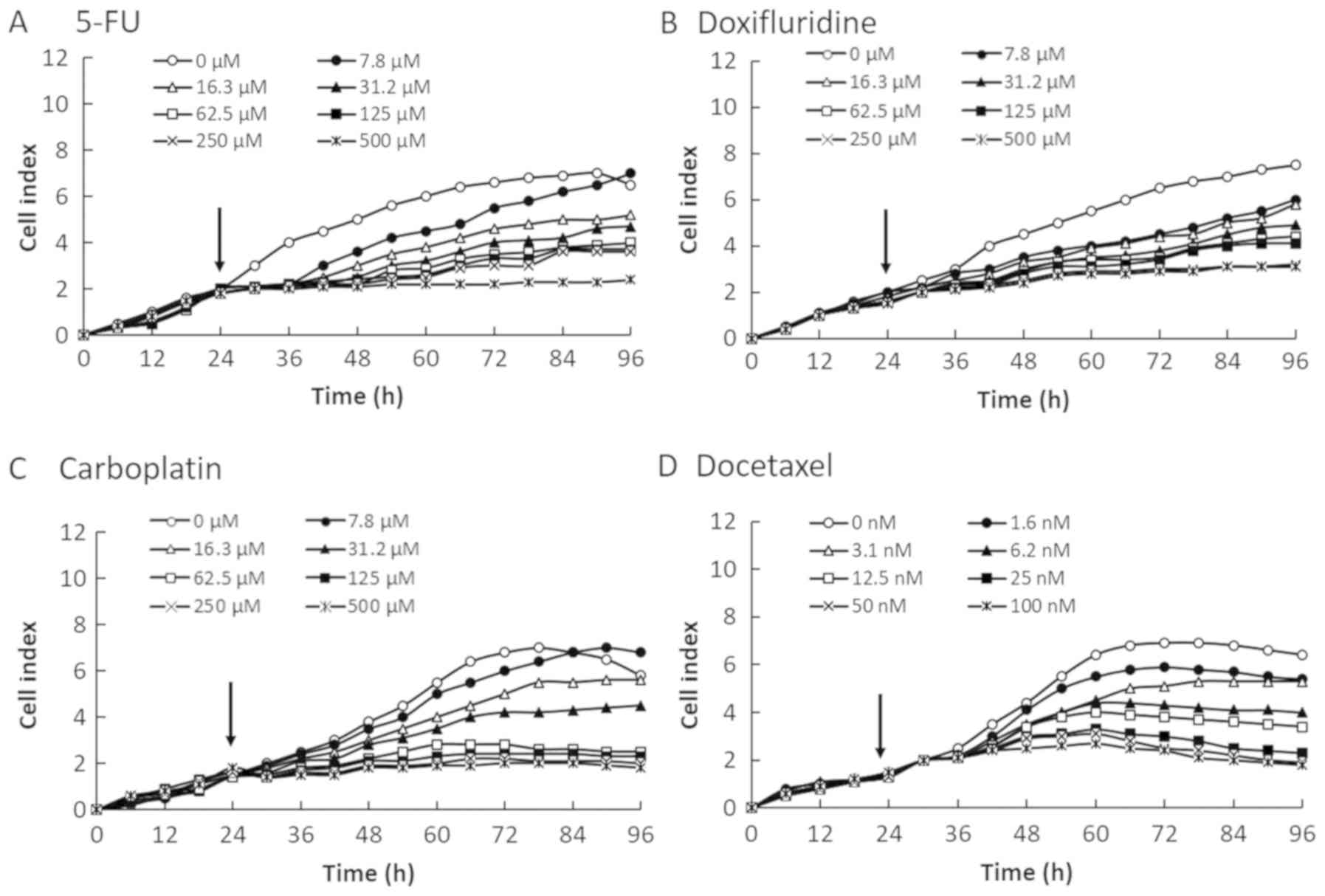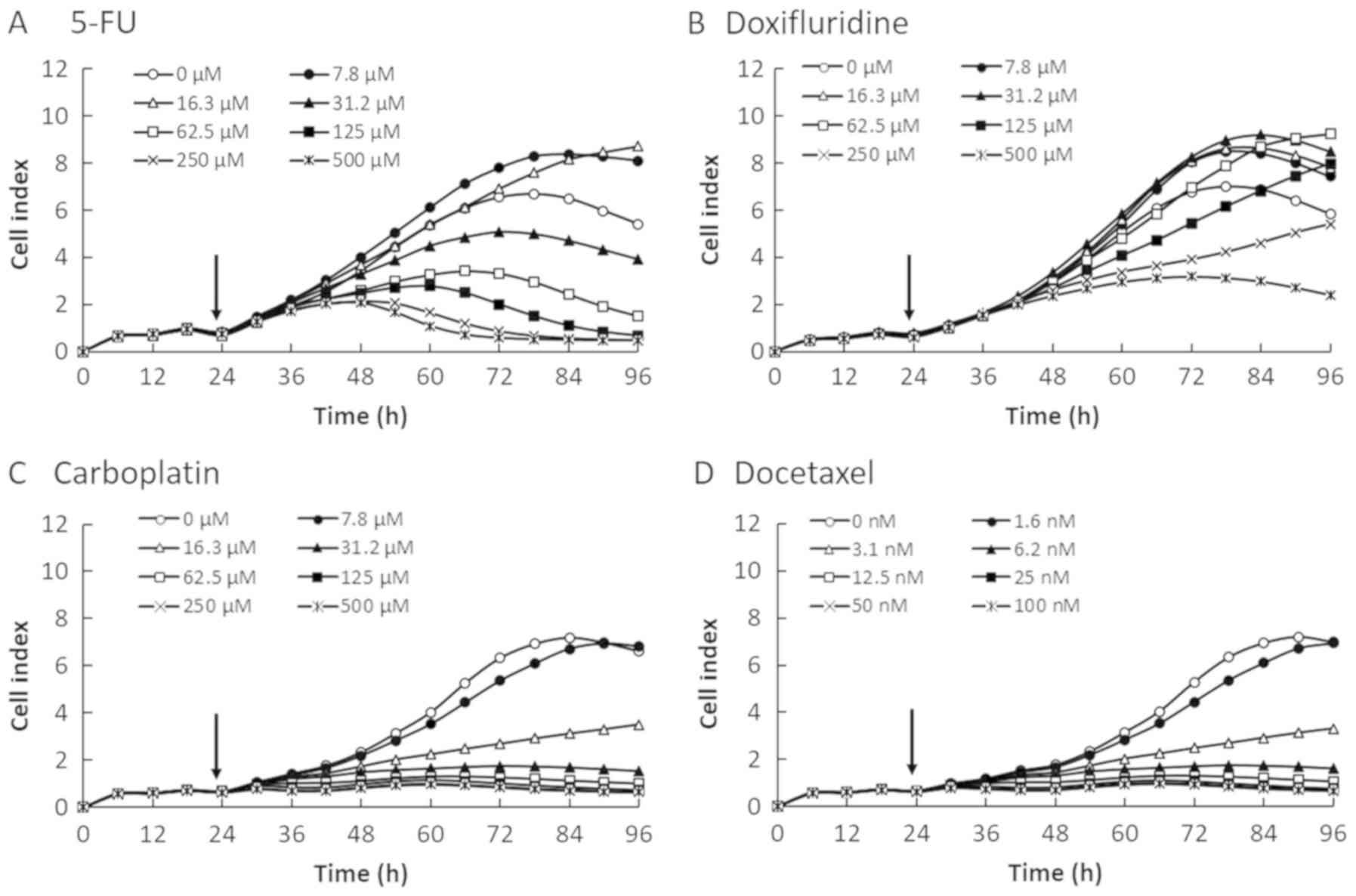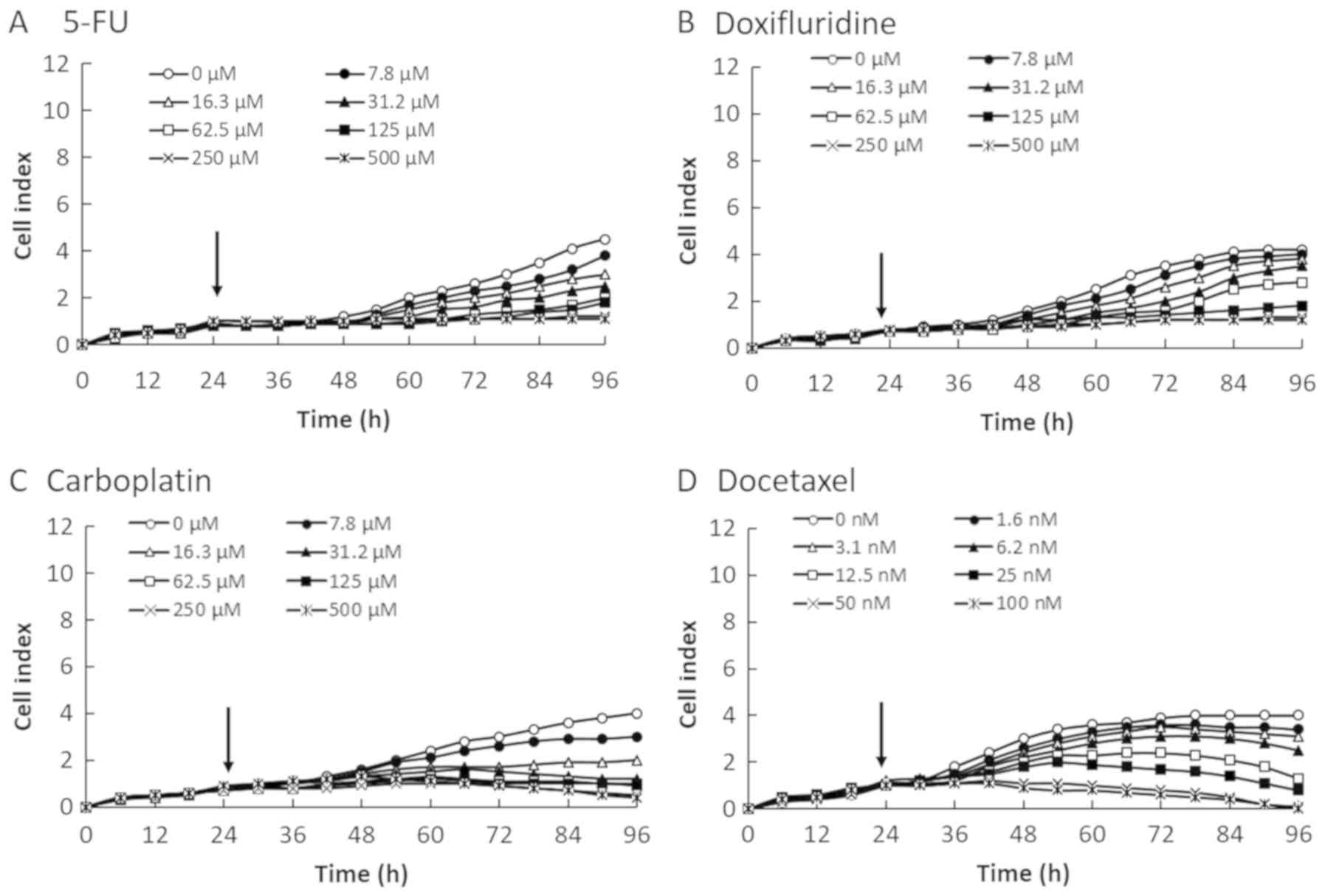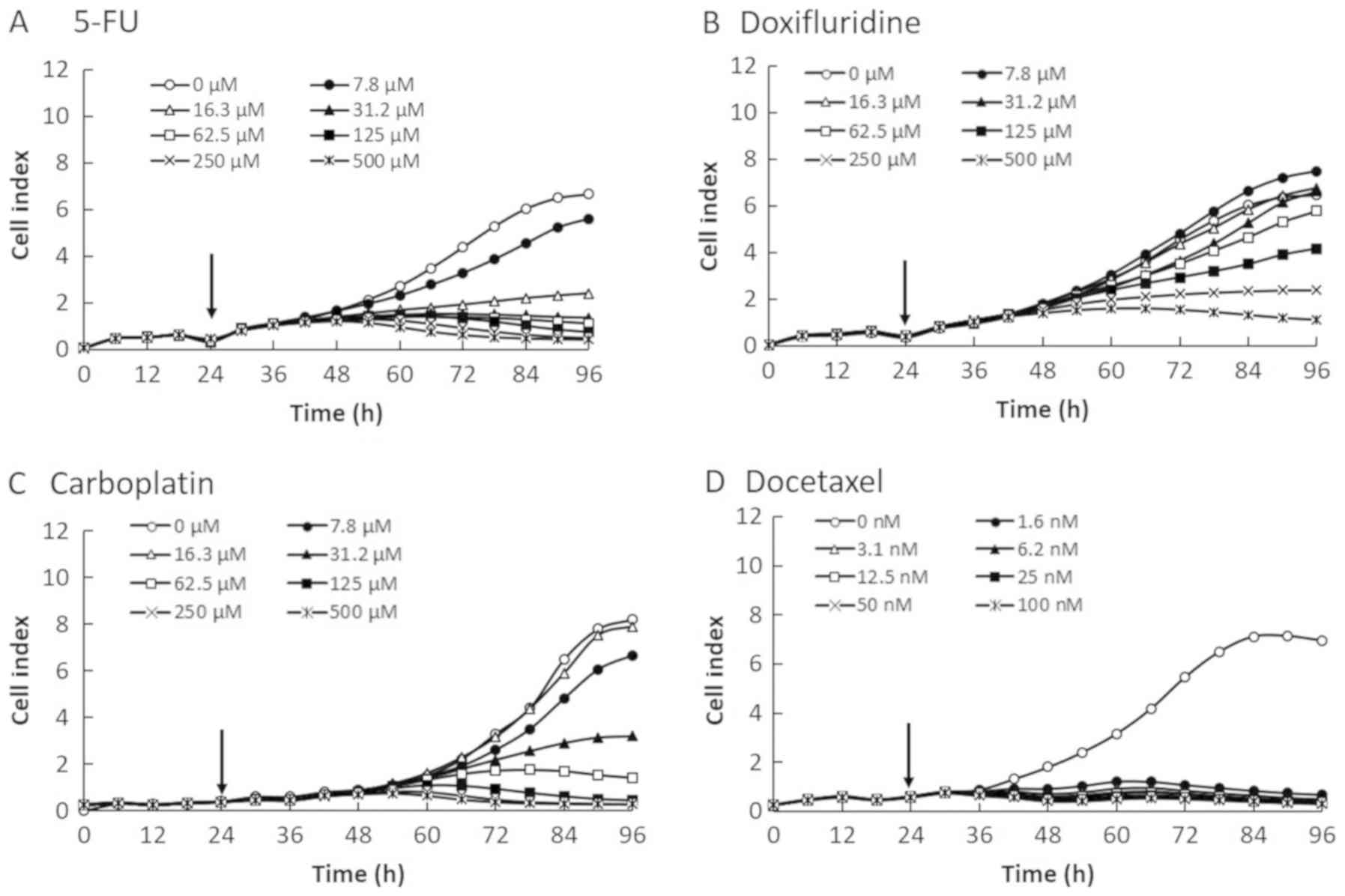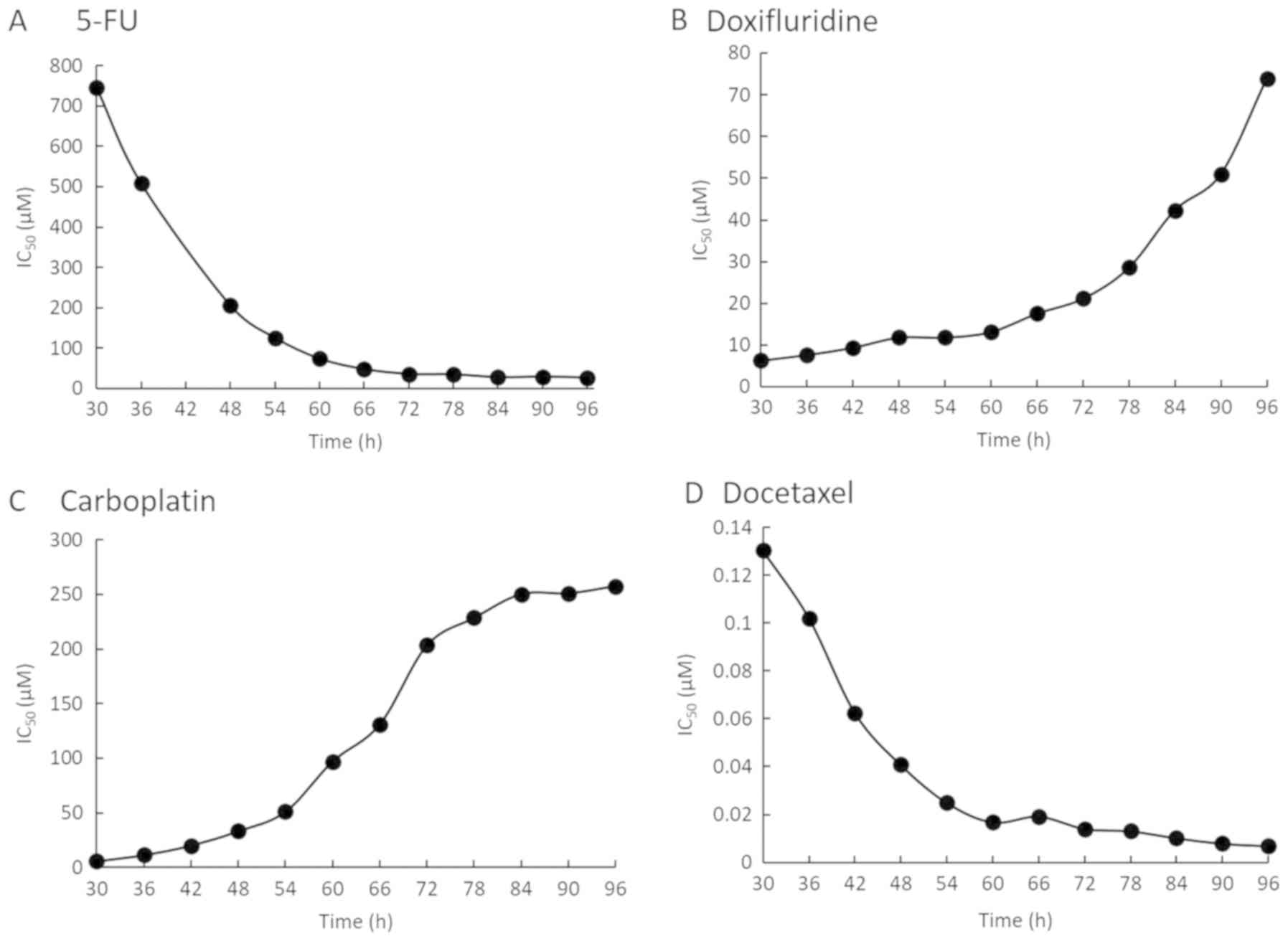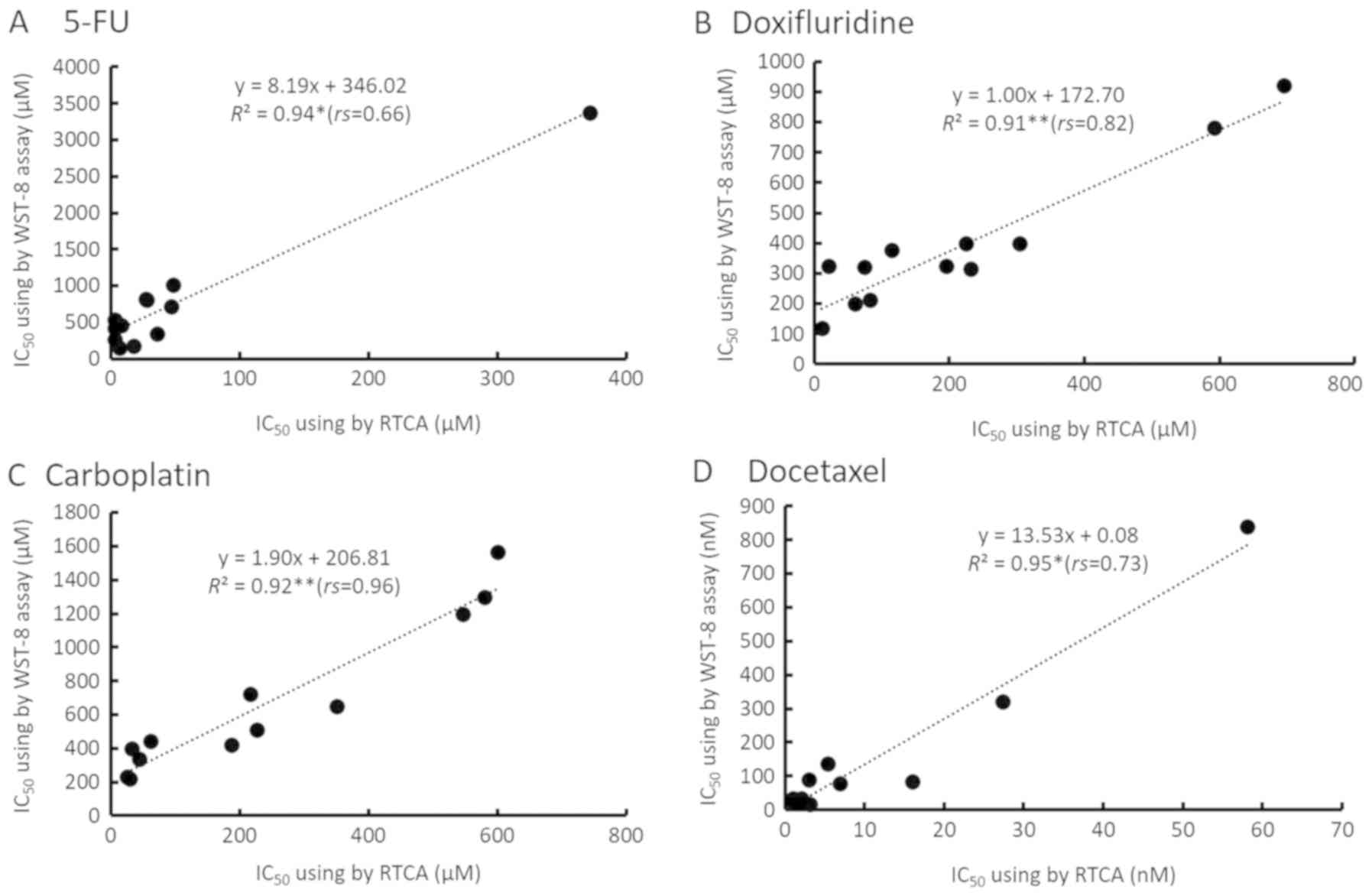|
1
|
Xing JZ, Zhu L, Jackson JA, Gabos S, Sun
XJ, Wang XB and Xu X: Dynamic monitoring of cytotoxicity on
microelectronic sensors. Chem Res Toxicol. 18:154–161. 2005.
View Article : Google Scholar : PubMed/NCBI
|
|
2
|
Xing JZ, Zhu LJ, Gabos S and Xie L:
Microelectronic cell sensor assay for detection of cytotoxicity and
prediction of acute toxicity. Toxicol In Vitro. 20:995–1004. 2006.
View Article : Google Scholar : PubMed/NCBI
|
|
3
|
Zhu J, Wang X, Xu X and Abassi YA: Dynamic
and label-free monitoring of natural killer cell cytotoxic activity
using electronic cell sensor arrays. J Immunol Methods. 309:25–33.
2006. View Article : Google Scholar : PubMed/NCBI
|
|
4
|
Xi B, Yu N, Wang X, Xu X and Abassi YA:
The application of cell-based label-free technology in drug
discovery. Biotechnol J. 3:484–495. 2008. View Article : Google Scholar : PubMed/NCBI
|
|
5
|
Türker Sener L, Albeniz G, Dinc B and
Albeniz I: iCELLigence real-time cell analysis system for examining
the cytotoxicity of drugs to cancer cell lines. Exp Ther Med.
14:1866–1870. 2017. View Article : Google Scholar : PubMed/NCBI
|
|
6
|
Morioka M, Hazekawa M, Kawakubo-Yasukochi
T, Nishinakagawa T, Nakamura S and Nakashima M: Effect of collagen
type I or human fibronectin on imatinib cytotoxicity in oral
squamous cell carcinoma. Pharmacol Pharm. 7:255–263. 2016.
View Article : Google Scholar
|
|
7
|
Hazekawa M, Morioka M, Nishinakagawa T,
Kawakubo- Yasukochi T, Nakamura S and Nakashima M: Assessment of
cytotoxicity of imatinib for oral squamous cell carcinoma by a
real-time cell analysis system. eJBio. 13:56–62. 2017.
|
|
8
|
McEneny-King A, Edginton AN and Rao PP:
Investigating the binding interactions of the anti-Alzheimer's drug
donepezil with CYP3A4 and P-glycoprotein. Bioorg Med Chem Lett.
25:297–301. 2015. View Article : Google Scholar : PubMed/NCBI
|
|
9
|
Ota T, Shinotoh H, Fukushi K, Kikuchi T,
Sato K, Tanaka N, Shimada H, Hirano S, Miyoshi M, Arai H, et al:
Esyimation of plasma IC50 of donepezil for cerebral
acetylcholinesterase inhibition in patients with Alzheimer disease
using positron emission tomography. Clin Neurophaemacol. 33:74–78.
2010. View Article : Google Scholar
|
|
10
|
Kawakubo-Yasukochi T, Morioka M, Hayashi
Y, Nishinakagawa T, Hazekawa M, Kawano S Nakamura S and Nakashima
M: The SQUU-B cell line spreads its metastatic properties to
nonmetastatic clone SQUU-A from the same patient through exosomes.
J Oral Biosci. 58:33–38. 2016. View Article : Google Scholar
|
|
11
|
Morioka M, Kawakubo-Yasukochi T, Hayashi
Y, Hazekawa M, Nishinakagawa T, Ono K, Kawano S, Nakamura S and
Nakashima M: Exosomes from oral squamous carcinoma cell lines,
SQUU-A and SQUU-B, define the tropism of lymphatic dissemination. J
Oral Biosci. 58:180–184. 2016. View Article : Google Scholar
|
|
12
|
Kawakubo-Yasukochi T, Morioka M, Hazekawa
M, Yasukochi A, Nishinakagawa T, Ono K, Kawano S, Nakamura S and
Nakashima M: miR-200c-3p spreads invasive capacity in human oral
squamous cell carcinoma microenvironment. Mol Carcinog. 57:295–302.
2018. View
Article : Google Scholar : PubMed/NCBI
|
|
13
|
Takahashi K, Kanazawa H, Akiyama Y, Tazaki
S, Takahara M, Muto T, Tanzaawa H and Sato K: Establishment and
characterization of a cell line (SAS) from poorly differentiated
human squamous cell carcinoma of the tongue. J Jpn Stomatol Soc.
38:20–28. 1989.
|
|
14
|
Yoshiya M: A fibronectin-producing cell
line established from a human squamous cell carcinoma of the tongue
and its characterization. Jpn J Oral Maxillofac Surg. 36:868–880.
1990. View Article : Google Scholar
|
|
15
|
Tanaka H, Toyoshima T, Sonoda K, Kitamura
R, Sasaguri M, Kawano S, Matsubara R, Goto Y and Nakamura S:
Apoptotic function of tumor-associated antigen RCAS1 in oral
squamous cell carcinoma. J Transl Med. 12:1122014. View Article : Google Scholar : PubMed/NCBI
|
|
16
|
Chien MH, Chang WM, Lee WJ, Chang YC, Lai
TC, Chan DV, Sharma R, Lin YF and Hsiao M: A Fas ligand
(FasL)-fused humanized antibody against tumor-associated
glycoprotein 72 selectively exhibits the cytotoxic effect against
oral cancer cells with a low FasL/Fas ratio. Mol Cancer Ther.
16:1102–1113. 2017. View Article : Google Scholar : PubMed/NCBI
|
|
17
|
Takaoka S, Iwase M, Uchida M, Yoshida S,
Kondo G, Watanabe H, Ohashi M, Nagumo M and Shintani S: Effect of
combining epidermal growth factor receptor inhibitors and cisplatin
on proliferation and apoptosis of oral squamous cell carcinoma
cells. Int J Oncol. 30:1460–1476. 2007.
|
|
18
|
Morifuji M, Taniguchi S, Sakai H,
Nakabeppu Y and Ohishi M: Differential expression of cytokeratin
after orthotopic implantation of newly established human tongue
cancer cell lines of defined metastatic ability. Am J Pathol.
156:1317–1326. 2000. View Article : Google Scholar : PubMed/NCBI
|
|
19
|
Hung CM, Chang CC, Lin CW, Ko SY and Hsu
YC: Cucurbitacin E as inducer of cell death and apoptosis in human
oral squamous cell carcinoma cell line SAS. Int J Mol Sci.
14:17147–17156. 2013. View Article : Google Scholar : PubMed/NCBI
|
|
20
|
Chen YW, Huang HS, Shieh YS, Ma KH, Huang
SH, Hueng DY, Sytwu HK and Lin GJ: A novel compound NSC745885
exerts anti-tumor effect on tongue cancer SAS cells in vitro and in
vivo. PLoS One. 9:e1047032014. View Article : Google Scholar : PubMed/NCBI
|
|
21
|
Casale F, Canaparo R, Serpe L, Muntoni E,
Pepa CD, Costa M, Marirone L, Zara GP, Fornari G and Eandi M:
Plasma concentrations of 5-fluorouracil and its metabolites in
colon cancer patients. Pharmacol Res. 50:173–179. 2004. View Article : Google Scholar : PubMed/NCBI
|
|
22
|
Van Der Heyden SA, Highley MS, De Bruijin
EA, Tjaden UR, Reeuwijk HJ, Van Slooten H, Van Oosterom AT and Maes
RA: Pharmacokinetics and bioavailability of oral
5′-deoxy-5-fluorouridine in cancer patients. Br J Clin Pharmecol.
47:351–356. 1999. View Article : Google Scholar
|
|
23
|
Kern W, Braess J, Friedrichsen S, Kaufmann
CC, Schleyer E and Hiddemann W: Carboplatin pharmacokinetics in
patients receiving carboplatin and paclitaxel/docetaxel for
advanced lung cancers: Impact of age and renal function on area
under the curve. J Cancer Res Clin Oncol. 127:64–68. 2001.
View Article : Google Scholar : PubMed/NCBI
|
|
24
|
Kenmotsu H and Tanigawara Y:
Pharmacokinetics, dynamics and toxicity of docetaxel: Why the
Japanese dose differs from the western dose. Cancer Sci.
106:497–504. 2015. View Article : Google Scholar : PubMed/NCBI
|
|
25
|
Minami H, Kawada K, Sasaki Y, Igarashi T,
Saeki T, Tahara M, Itoh K and Fujii H: Pharmacokinetics and
pharmacodynamics of protein-unbound docetaxel in cancer patients.
Cancer Sci. 97:235–241. 2006. View Article : Google Scholar : PubMed/NCBI
|
|
26
|
Zhao P, Guo S, Tu Z, Di L, Zha X, Zhou H
and Zhang X: Gihl3 induces human epithelial tumor cell migration
and invasion via downregulation of E-cadherin. Acta Biochim Biophys
Sin (Shanghai). 48:266–274. 2016. View Article : Google Scholar : PubMed/NCBI
|
|
27
|
Szulccek R, Bogaard HJ and van Nieuw
Amerogen GP: Electric cell-substrate impedance sensing for the
quantification of endothelial proliferation, barrier function, and
motility. J Vis Exp. Mar 28–2014. View
Article : Google Scholar
|
|
28
|
Ku M, Kang M, Suh JS and Yang J: Effects
for sequential treatment of siAkt and paclitaxel on gastric cancer
cell lines. Int J Med Sci. 13:708–716. 2016. View Article : Google Scholar : PubMed/NCBI
|
|
29
|
Feng Z, Wang Z, Yang M, Zhou L and Bao Y:
Polysaccharopeptide exerts immunoregulatory effects via
MyD88-dependent signaling pathway. Int J Biol Macromol. 82:201–207.
2016. View Article : Google Scholar : PubMed/NCBI
|
|
30
|
Genc G, Kilinc V, Bedir A and Ozkaya O:
Effect of creatine and pioglitazone on Hk-2 cell line cisplatin
nephrotoxicity. Ren Fail. 36:1104–1107. 2014. View Article : Google Scholar : PubMed/NCBI
|
|
31
|
Ng NS, Wu MJ, Myers SJ and Aldrich-Wright
JR: The in vitro renal cell toxicity of some unconventional
anticancer phenanthroline-based platinum (II) cpmplexes. J lnorg
Biochem. 179:97–106. 2018. View Article : Google Scholar
|
|
32
|
Ma K, Zhang C, huang MY, Guo YX and Hu GQ:
Crosstalk between Beclin-1-dependent autophagy and
caspase-dependent apoptosis induced by transhinone IIA in human
osteosarcoma MG-63 cells. Oncol Rep. 36:1807–1818. 2016. View Article : Google Scholar : PubMed/NCBI
|
|
33
|
Augustine D, Rao RS, Anbu J and Chidambara
Murthy KN: In vitro cytotoxic and apoptotic induction effect of
earthworm coelomic fluid of Eudrilus eugeniae, Eisenia foetida, and
Perionyx excavatus on human oral squamous cell carcinoma-9 cell
line. Toxicol Rep. 6:347–357. 2019. View Article : Google Scholar : PubMed/NCBI
|















